It’s like a nest of anacondas writhing through the topsoil, slithering up to grab onto the trees trunks, snake along their limbs, strangle them into a dense thicket of vines with an evil, merciless sprawl up to the tree tops. This sprawl borders the approach to our home, alongside the the top of our impossible dirt road (that gets too muddy to use after the winter thaw), and is one of the first things you see when approaching Rocinante, with the red farmhouse visible through the vines.
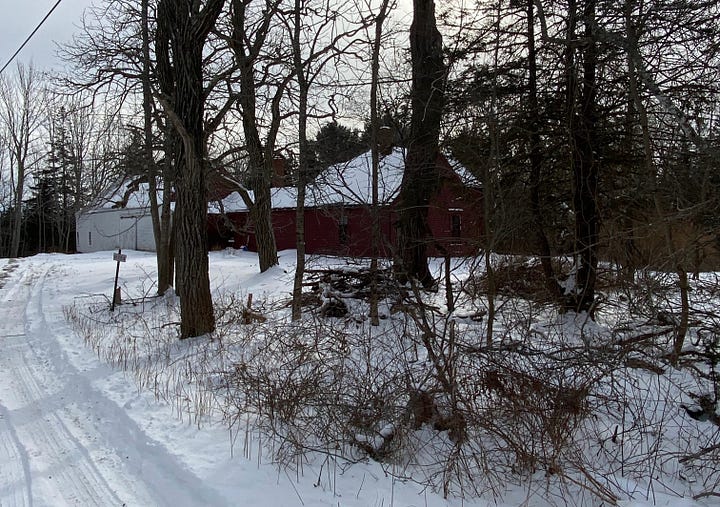

As an added joy, the tangle of vines is also where we asked the builders to drop the huge foundation stones that had collapsed under our home, when they dug them out to pour the new foundations during our first summer here in 2023. The foundation stones were scooped up in a digger basket and dumped along the side of the tangle — the idea being that one day we could re-stack and upcycle them into a border wall like all the other stone walls circling and criss-crossing through Rocinante.
I didn’t realize large chunks of cement would be together with the big boulders, but this adds to the conundrum. Honestly, it’s a mess, the type of thing that happens when a place is abandoned.
For two years we have prioritized other projects around the farm — like the afore-mentioned foundations project, our veggie garden, and our landworks in the forest; but this Spring, knowing we had budgeted for a big 5 days of help from Cory — who came to the rescue last spring bringing down a multitude of trees that had taken over our backyard — we thought it was finally time to tackle this overwhelming project. Uprooting the evil in our yard…
Some of you might be familiar with the blight that we are tackling here: ironically, called bittersweet. Personally, I see nothing sweet about this plant — but the birds seem to enjoy its colorful autumn berries, and spread its seeds. An invasive, non-native plant (originally from East Asia), it is very successful at conquering whatever areas it invades, a formidable foe.
Cory started battling this beast last week with a weed-whacker attached with a very sharp saw blade, surgically cutting out the vines, and downing quite a few trees whose life had been entirely strangled. We had already noticed one apple tree in the thicket, still miraculously showing signs of life, and while clearing the area, Cory found another. (He also found a tree entirely colonized by carpenter ants, which he blow torched!)

The project is at a standstill for a few days (hopefully continuing tomorrow), but a large part of the offensive was completed. While we wait for Cory to return, I’ve been pulling up roots, trying to wrench the incredible tangle of long ropy tendrils out of the moist soil — it can run incredible stretches just under the surface, like a bright orange neural network. We are avoiding using Roundup which is a standard weapon in the bittersweet war, so I’ve been doing what I can to pull up the roots in the least affected part of the infestation. I’m sure I’ve barely touched the tip of this underground network of tangled bright orange roots, splitting, dividing, pushing relentlessly outward. Nevertheless we wage war, hoping that with surveillance and tenacity, we will eventually wear it down.
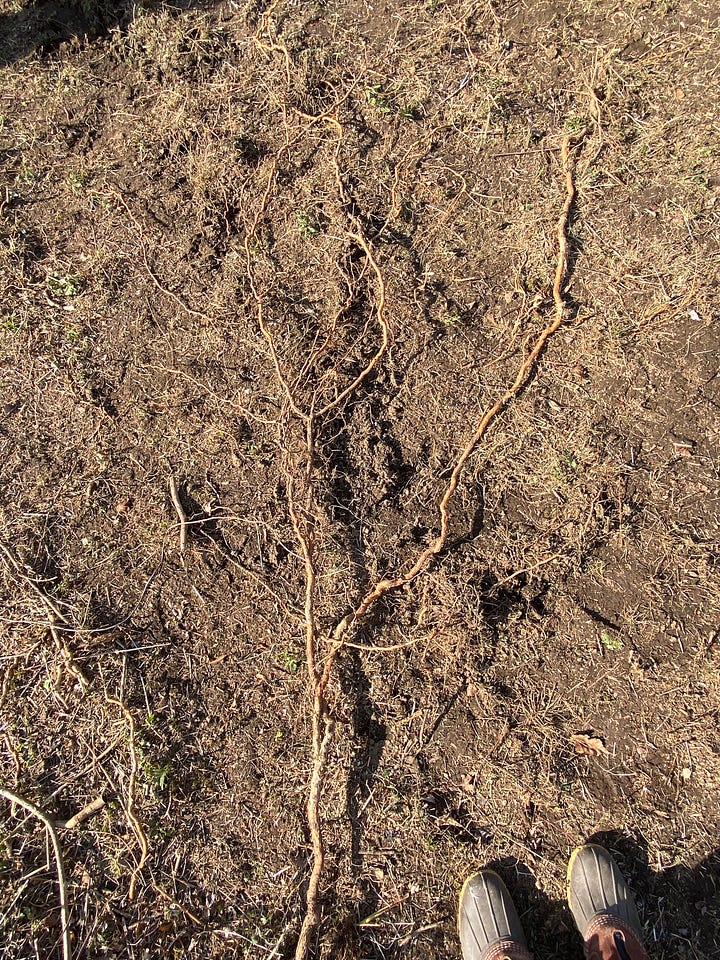

At first our plan was to replant the cleared area with fruit trees, to join the two rescued apple trees, but seeing the root systems, mingled with the roots of the felled trees, a deep entanglement in the heart of this area, our fruit trees are being planted on the periphery of the blighted space, and we are still taking stock and thinking how to handle the worst of it. Honestly, covering it with gravel and using the area for parking might be our best best: it feels like it might need a rest.
Nevertheless, yesterday we left the island, crossing our iconic Deer Isle bridge, and headed for an organic orchard in Brooklin, just over the water from us. 5 Star Nursery grows fruit trees, and a range of native plants, as well as cultivating mushrooms and producing ciders and apple cider vinegars and an array of heirloom fruit in their orchard. Certified Organic, and working in support of the many indigenous-led food sovereignty and environmental programs that are thriving in the Wabanaki Homeland, this is one of my favorite local farms, and we went there to pick up four fruit trees from their nursery (2 plum, 2 apple trees).
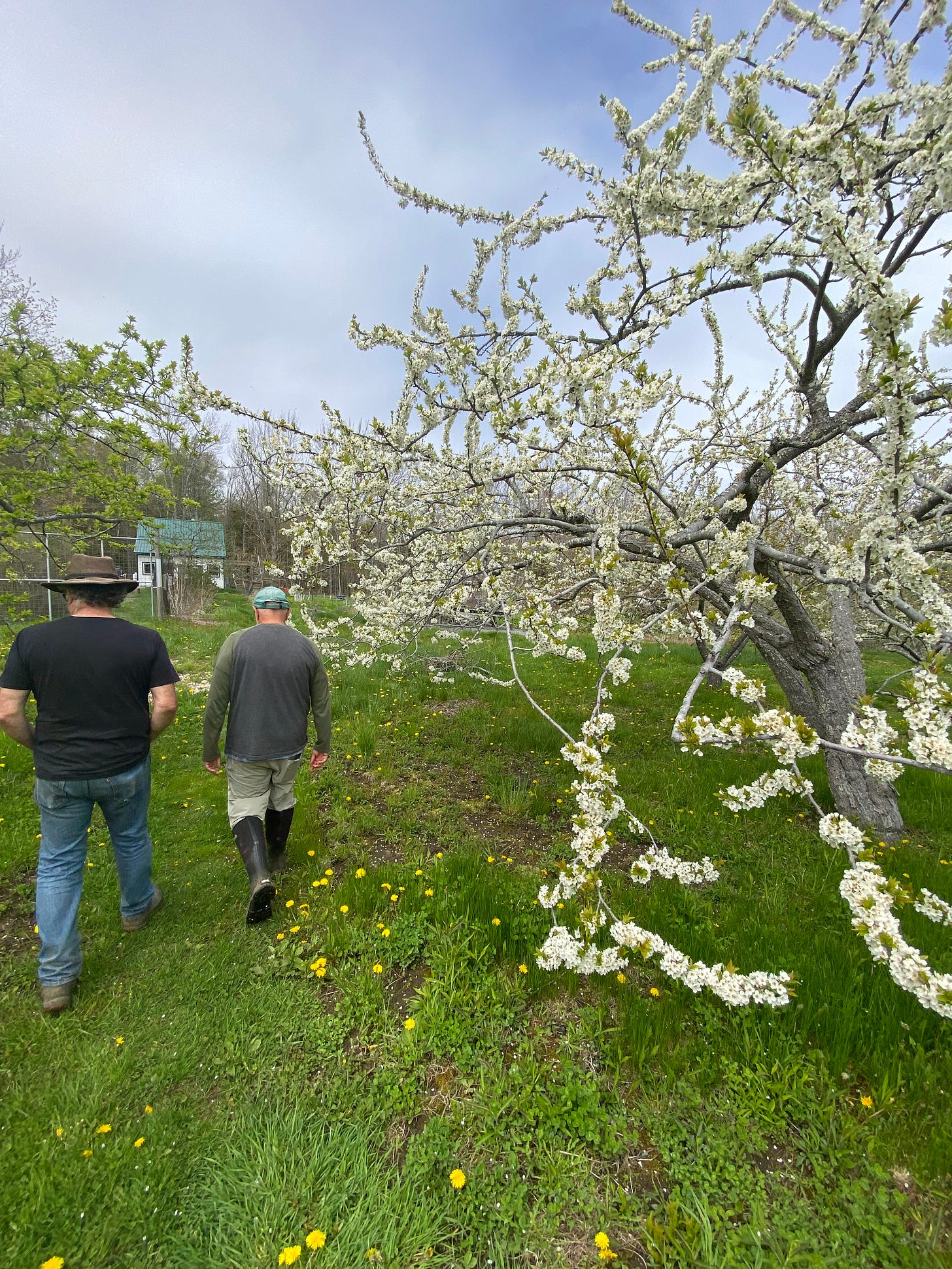
Waiting for us on the front step of the house was a bucket with our 4 chosen trees, but before we left I asked Tim if we could see the flowering orchard — in particular the flowering Asian pear trees which later this summer will bear fruit that we will dehydrate and pack into the new “Pears for the People” packaging I have been busy creating this spring for my business.
The portion of the orchard devoted to Asian pears is a small cluster of trees, and this product will be produced by pre-order only. While I was in New York, I collected the coring tools and the mandolin we will use to prepare the fruit prior to dehydrating. The natural sweetness of the pears is all that’s needed, nothing more. The fruit will shine. Beau and I have been testing our process with other types of pears we can buy at the local Coop, but we can only guess how delicious these will be and can’t wait to see these flowers grow into fruit and eventually be harvested… (And 2% of sales will be donated to different non profits, including Wabanaki Reach, a non profit supporting the self-determination of Wabanaki people through education, truth-telling, restorative justice, and restorative practices in Wabanaki and Maine communities.)
Back home, we have planted 3 of the four trees so far, on the edge of the blighted area where I’ve pulled out as much bittersweet root as possible.

So yes, it’s been a week of roots — root pulling and new roots being planted into our soil, and the roots of a relationship with growers who also believe in cultivating community.
To Spring and to Growth, with healthy roots!







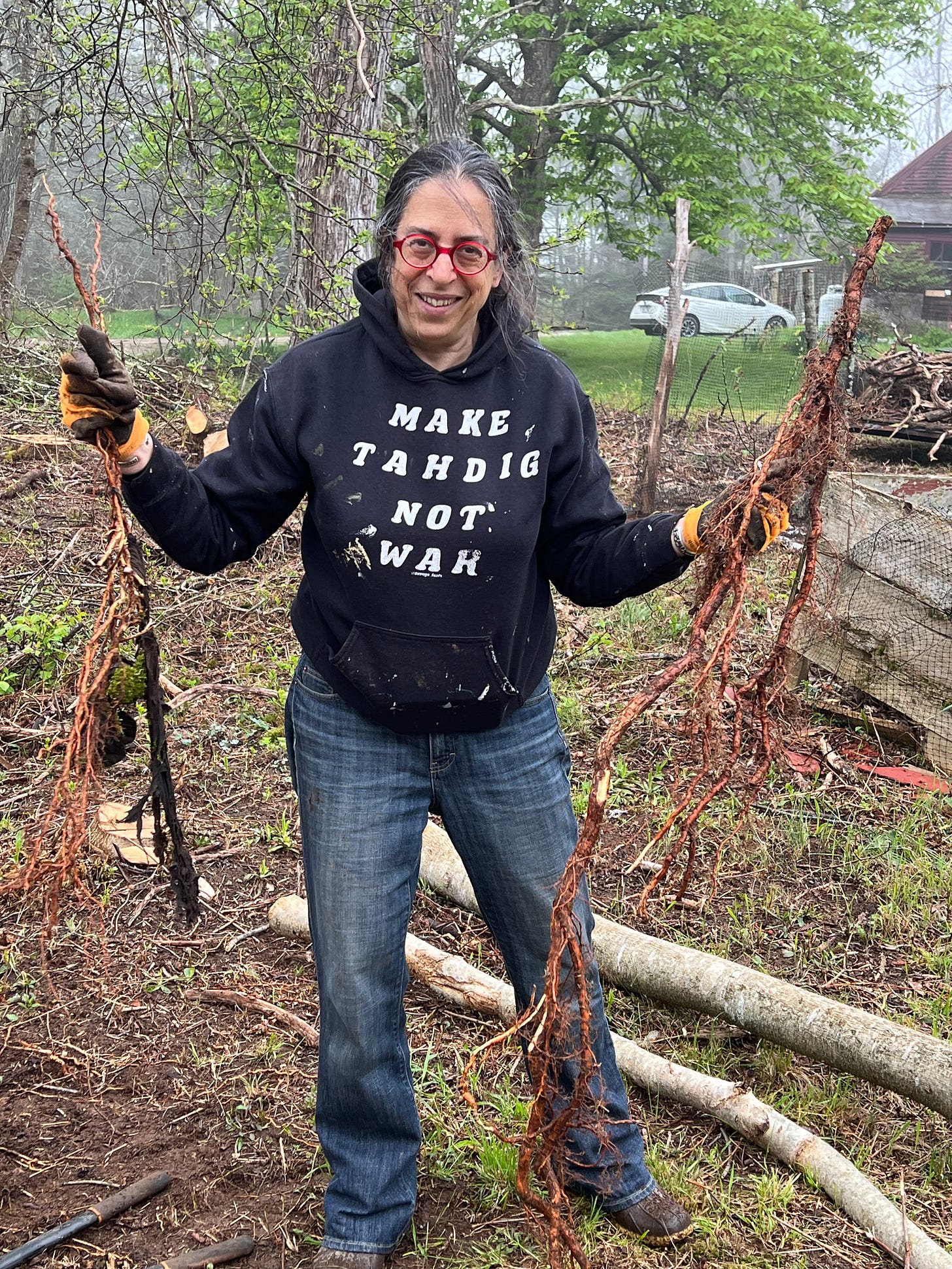
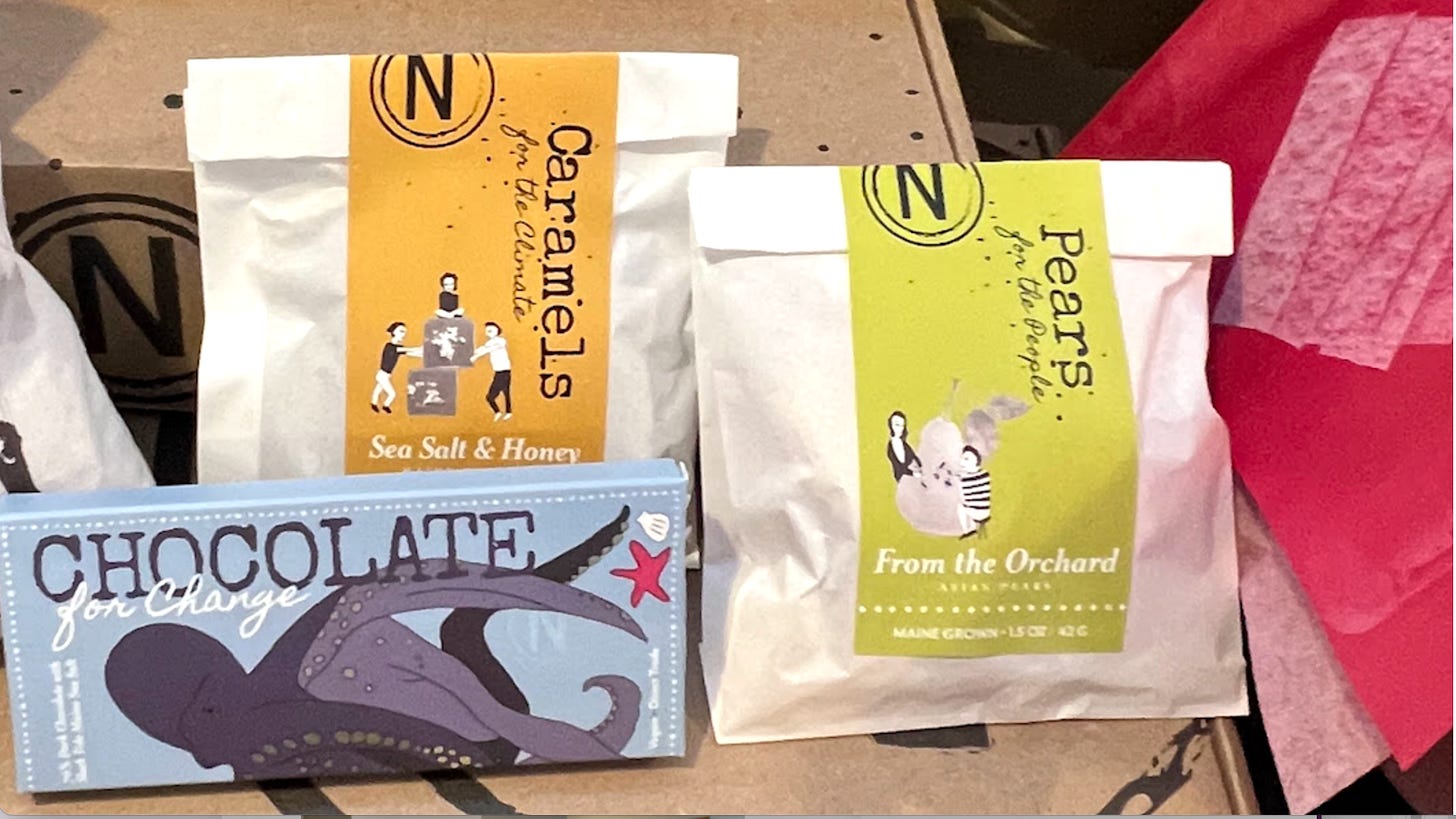
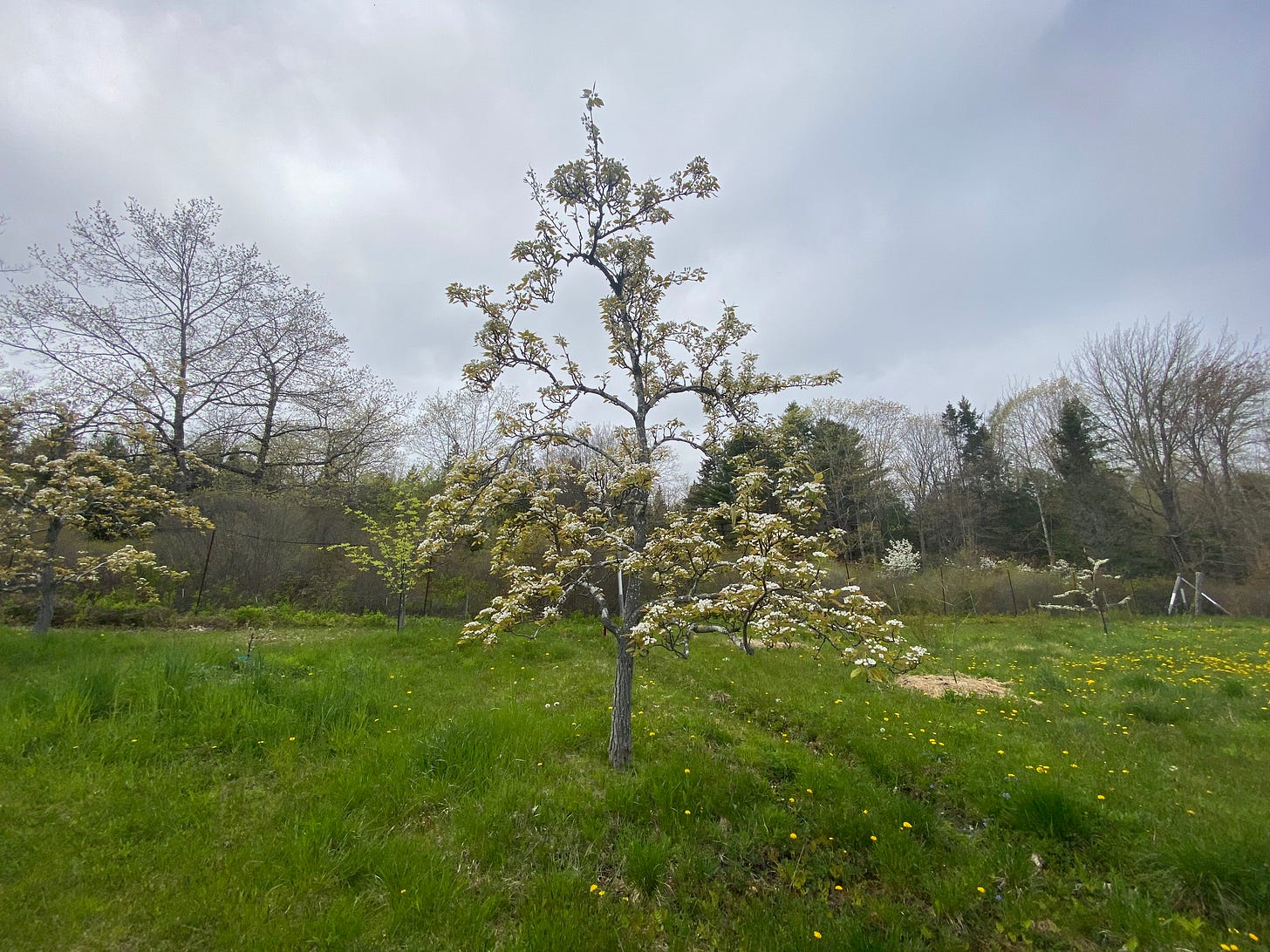
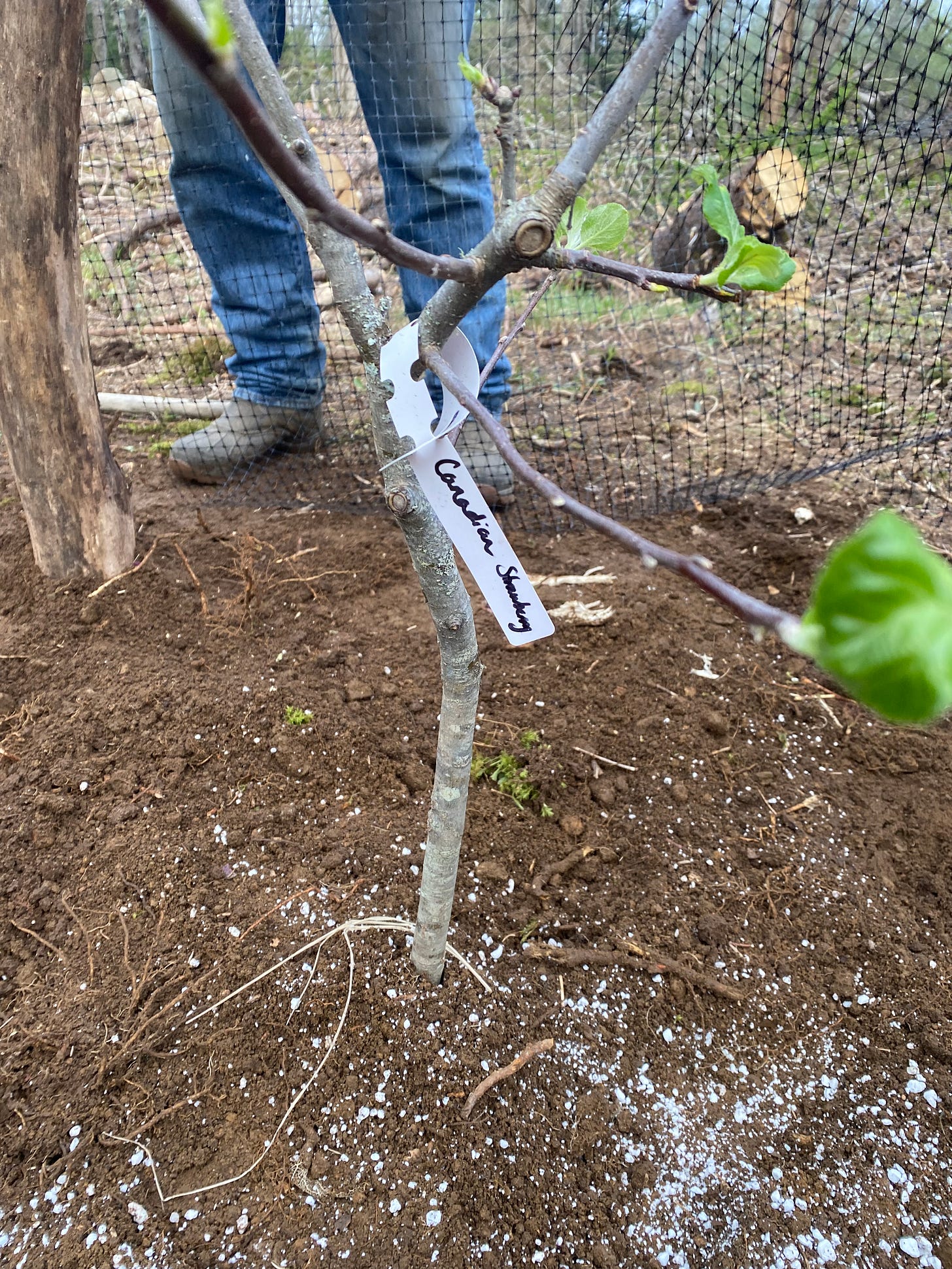
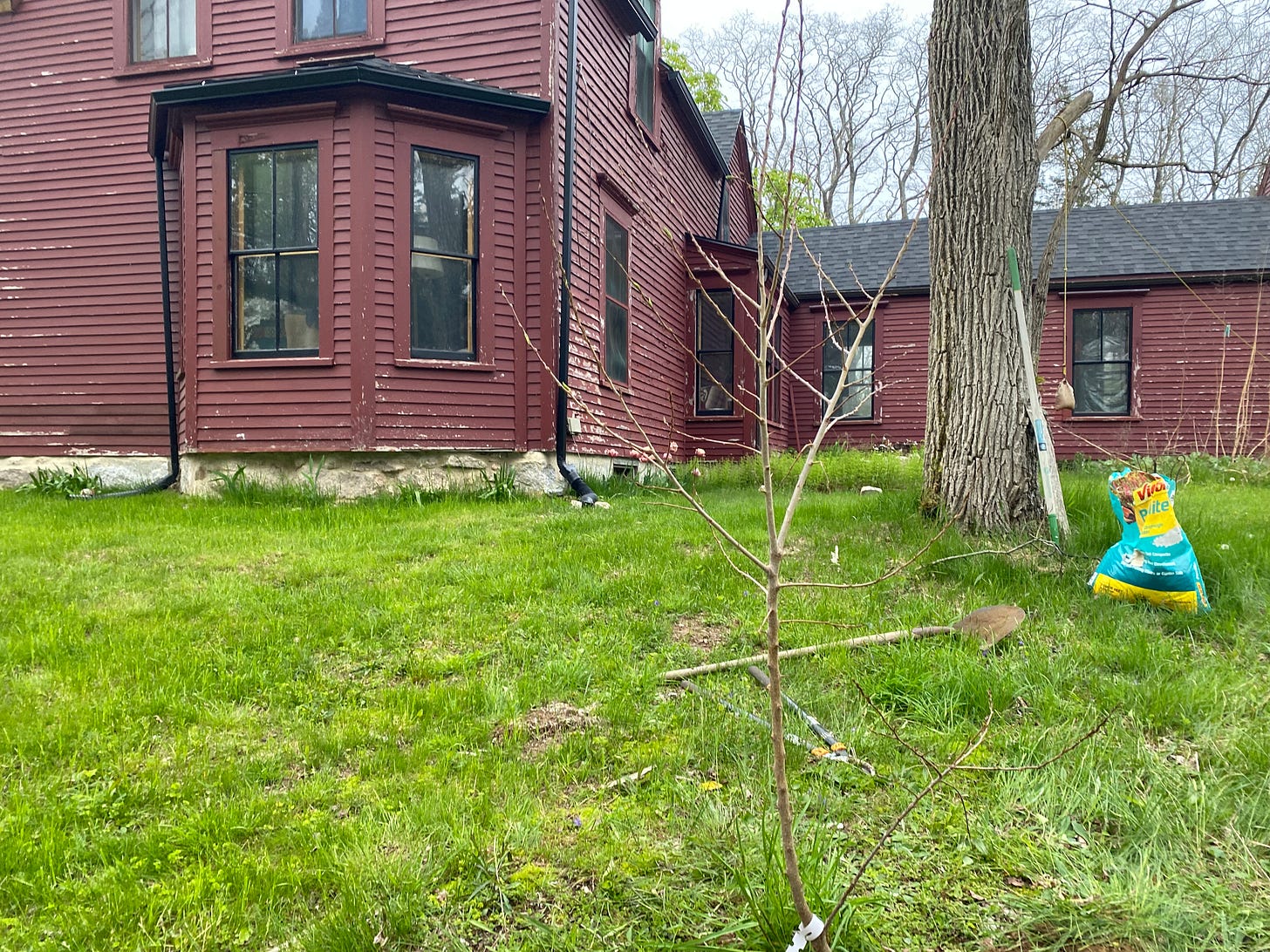
Yeah for your energy and determination!
Yeah for your energy and determination!